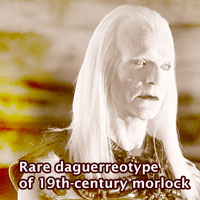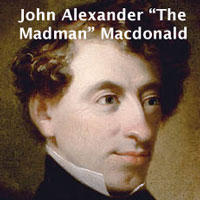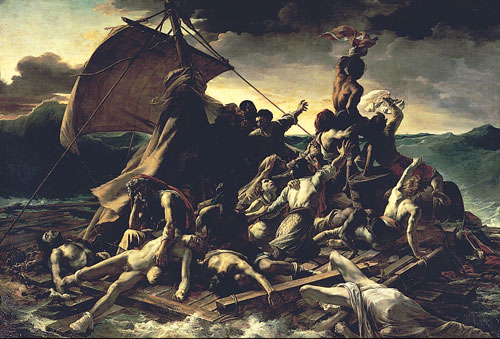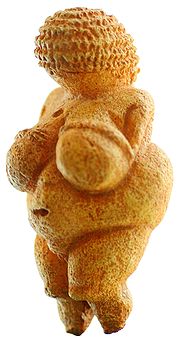To commemorate Canada Day tomorrow, I thought it might be useful to clear up some common myths people have about Canada and Canadian history. Many of the readers of The Skwib come from outside Canada, so this brief history may be especially helpful to you (though we Canadians can always learn more about our rich history too):
One: The Vikings
 The first Europeans to arrive in Canada were the Vikings, in 1009, making this the 1000-year anniversary of this important (factual) historical event. Their leader, Leif The Abrasive, was told by several Irish monks that a “vast and rich land” lay across the Atlantic Ocean. Leif, who was torturing them at the time, took them at their word and immediately launched a massive invasion. Many of the longboats sank in the crossing, but the core band arrived in Newfoundland (which the Vikings hopefully called “Vinland”, as they expected to find many fine wines in this new world — a hope which would not be fulfilled until the early 1990s.) Initially, the Viking settlement was successful, winning several Juno Awards — a kind of Canadian Grammy — but soon they split because of “creative differences”. Little was heard of them afterwards, but one of the members later had an interesting show about the early days of Viking rock on CBC Radio.
The first Europeans to arrive in Canada were the Vikings, in 1009, making this the 1000-year anniversary of this important (factual) historical event. Their leader, Leif The Abrasive, was told by several Irish monks that a “vast and rich land” lay across the Atlantic Ocean. Leif, who was torturing them at the time, took them at their word and immediately launched a massive invasion. Many of the longboats sank in the crossing, but the core band arrived in Newfoundland (which the Vikings hopefully called “Vinland”, as they expected to find many fine wines in this new world — a hope which would not be fulfilled until the early 1990s.) Initially, the Viking settlement was successful, winning several Juno Awards — a kind of Canadian Grammy — but soon they split because of “creative differences”. Little was heard of them afterwards, but one of the members later had an interesting show about the early days of Viking rock on CBC Radio.
Two: Other Invasions
 The next massive invasion came from the French, who had an insatiable thirst for beaver. Eventually, the British invaded too, declaring that they too had a hunger for “beaver and other pelts”, but really they were just jealous of the French, who were so good at trapping and mating with the cute, industrious rodents. Throughout this period, the aboriginal populations of Canada (erroneously called “Indians” because of the navigationally challenged racist Christopher Columbus), tried to cope with their perverted new neighbors, though they never understood them.
The next massive invasion came from the French, who had an insatiable thirst for beaver. Eventually, the British invaded too, declaring that they too had a hunger for “beaver and other pelts”, but really they were just jealous of the French, who were so good at trapping and mating with the cute, industrious rodents. Throughout this period, the aboriginal populations of Canada (erroneously called “Indians” because of the navigationally challenged racist Christopher Columbus), tried to cope with their perverted new neighbors, though they never understood them.
Three: Canada” does not mean “village”
 Many people believe the name Canada is based on the Iroquois word “kanata” or “village.” The sad truth is Canada is named after Lord Alfred O. Canada, the first Twit Plenipotentiary sent by the British Crown to rule over the beaver-addled country with an iron fist (he’d lost his original hand in the Battle of Ipswich — fought between the Dutch, the French and the British over who was going to pick up the check at the annual Let’s Rape the New World Convention and BeaverFest) and his laser-beam-firing eyes. (He is a ancestor of Queen Victoria.) Though he was a twit, his powerful eyes were capable of leveling cities and the primitive flintlocks used at the time could not penetrate the force shield he was able to generate with the power of his idiocy. He fed himself on a steady diet of French babies and British virgins (who were plentiful in the Age of the Pox). Many were lost in the battle against the depredations of Lord Alfred or “he who should not be named”, but eventually, he was tricked into getting into a canoe just upriver of Niagara Falls. (The clever rebel force had placed a sign on the canoe that said, “fresh French baby here”.) When he was in the canoe, confused by the lack of baby, the plucky freedom fighters pushed the canoe into the swift current. The heroic rebels were vaporized by Lord Alfred’s fiery gaze, but their plan had succeeded: the Twit Plenipotentiary fell to his death as not even his incredibly stupidity field could save him. Niagara Falls is a venerated site because of this history, and most Canadians will, at some point, make the pilgrimage to Niagara Falls where they will watch with reverence as they gaze at the power of the natural wonder for at least five minutes. They will then spend the afternoon looking at freaks. Canadians decided to take the name that they has formerly been afraid to utter, and use it to remind themselves of their resilience and fortitude. Furthermore, early Canadians immortalized this story by turning it into Canada’s national anthem:
Many people believe the name Canada is based on the Iroquois word “kanata” or “village.” The sad truth is Canada is named after Lord Alfred O. Canada, the first Twit Plenipotentiary sent by the British Crown to rule over the beaver-addled country with an iron fist (he’d lost his original hand in the Battle of Ipswich — fought between the Dutch, the French and the British over who was going to pick up the check at the annual Let’s Rape the New World Convention and BeaverFest) and his laser-beam-firing eyes. (He is a ancestor of Queen Victoria.) Though he was a twit, his powerful eyes were capable of leveling cities and the primitive flintlocks used at the time could not penetrate the force shield he was able to generate with the power of his idiocy. He fed himself on a steady diet of French babies and British virgins (who were plentiful in the Age of the Pox). Many were lost in the battle against the depredations of Lord Alfred or “he who should not be named”, but eventually, he was tricked into getting into a canoe just upriver of Niagara Falls. (The clever rebel force had placed a sign on the canoe that said, “fresh French baby here”.) When he was in the canoe, confused by the lack of baby, the plucky freedom fighters pushed the canoe into the swift current. The heroic rebels were vaporized by Lord Alfred’s fiery gaze, but their plan had succeeded: the Twit Plenipotentiary fell to his death as not even his incredibly stupidity field could save him. Niagara Falls is a venerated site because of this history, and most Canadians will, at some point, make the pilgrimage to Niagara Falls where they will watch with reverence as they gaze at the power of the natural wonder for at least five minutes. They will then spend the afternoon looking at freaks. Canadians decided to take the name that they has formerly been afraid to utter, and use it to remind themselves of their resilience and fortitude. Furthermore, early Canadians immortalized this story by turning it into Canada’s national anthem:
O. Canada,
You evil, nasty man,
Never again will babies be e-a-ten!
With glowing hearts we see thee fall
Thy hand of iron a weight.
From far and wide, O. Canada
With you we’re quite irate.
God keep our land, British twit free!
O. Canada we stand on guard from thee.
O. Canada we stand on guard from thee.
Four: The National Capital Region
 Despite the victory over Lord Alfred O. Canada, the British Crown continued to make decisions for thepeoples of Canada — they just stopped sending the twits here, and made their determinations in the UK; this is why the capital of the country is in Ottawa. Sitting on the south bank of the Ottawa River, the city is the fourth-coldest capital within parsecs. The only colder capitals are Ulaanbaatar (Mongolia), Moscow (Russia) and Pakit! (Hoth). What many people do not realize is that it is also a) one of the most humid capitals in the world (in the months of June-August) and b) the center of an underground civilization populated by Morlocks. The Morlocks, as you know, see human beings as a food source, but they are quite conservative in their culling practices, which incorporate a model of sustainability and eugenics rarely seen. The Morlocks have found that it is most efficient to eat only the most intelligent males in the National Capital Region. This explains the predominance of women in the civil service (one of Ottawa’s major industries). One supposes the Morlocks do not cull the intelligent females, because they are confident that the remaining male population will be of little interest to them. In fact, Queen Victoria’s twits actually knew about this, which is why they built Canada’s parliament in this region, ensuring the safety of Canada’s politicians for generations to come. (At this point in history, they still held out hopes that they might return to Canada and rule in person.) Note: Many textbooks will tell you that Ottawa was not made the capital until 1867, but this is, in fact, a typo. It was 1847.
Despite the victory over Lord Alfred O. Canada, the British Crown continued to make decisions for thepeoples of Canada — they just stopped sending the twits here, and made their determinations in the UK; this is why the capital of the country is in Ottawa. Sitting on the south bank of the Ottawa River, the city is the fourth-coldest capital within parsecs. The only colder capitals are Ulaanbaatar (Mongolia), Moscow (Russia) and Pakit! (Hoth). What many people do not realize is that it is also a) one of the most humid capitals in the world (in the months of June-August) and b) the center of an underground civilization populated by Morlocks. The Morlocks, as you know, see human beings as a food source, but they are quite conservative in their culling practices, which incorporate a model of sustainability and eugenics rarely seen. The Morlocks have found that it is most efficient to eat only the most intelligent males in the National Capital Region. This explains the predominance of women in the civil service (one of Ottawa’s major industries). One supposes the Morlocks do not cull the intelligent females, because they are confident that the remaining male population will be of little interest to them. In fact, Queen Victoria’s twits actually knew about this, which is why they built Canada’s parliament in this region, ensuring the safety of Canada’s politicians for generations to come. (At this point in history, they still held out hopes that they might return to Canada and rule in person.) Note: Many textbooks will tell you that Ottawa was not made the capital until 1867, but this is, in fact, a typo. It was 1847.
Five: The BNA Act
 Despite their alleged abhorrence of violence, Canadians have traditionally been fierce warriors. During the War of 1812, for example, Canada was defended from US invaders not by the British Army, nor our own irregular troops (they were all engaged in a real war with Napoleon Bonaparte), but by a cadre of little schoolgirls and one-legged lumberjacks. (Thus explaining the draw, or if you’re a student of American history, the “victory”.) No warrior was more fierce than the Scottish-born firebrand John Alexander “The Madman” Macdonald. He rose to prominence during the first Zombie War, 1837, and was elected to Parliament. (It is worth noting that The Madman is one of the few intelligent politicians to survive Morlock culling practices; while he was still young and hale, The Madman would spend many an evening in the underground world, doing a little culling of his own. (He led a group of Morlock-hunters called the Association of Really Ripped Gentlemen (ARRG) in his off-hours.) As he aged, The Madman discovered that he was able to feign stupidity by keeping himself “well-medicated” with scotch. Despite this impediment, he was still able to convince the British crown to allow Canada to govern itself, forming a “Confederation” under the Beaver Not Actually needed Act. (BNA Act.) This forms, essentially, the constitution of Canada. After achieving Confederation, Macdonald went on to enlist the help of the Association of Really Ripped Gentlemen (ARRG) in building a railroad across Canada, eliminating all the vampires from the Northwest Territories, and inventing the game of hockey.
Despite their alleged abhorrence of violence, Canadians have traditionally been fierce warriors. During the War of 1812, for example, Canada was defended from US invaders not by the British Army, nor our own irregular troops (they were all engaged in a real war with Napoleon Bonaparte), but by a cadre of little schoolgirls and one-legged lumberjacks. (Thus explaining the draw, or if you’re a student of American history, the “victory”.) No warrior was more fierce than the Scottish-born firebrand John Alexander “The Madman” Macdonald. He rose to prominence during the first Zombie War, 1837, and was elected to Parliament. (It is worth noting that The Madman is one of the few intelligent politicians to survive Morlock culling practices; while he was still young and hale, The Madman would spend many an evening in the underground world, doing a little culling of his own. (He led a group of Morlock-hunters called the Association of Really Ripped Gentlemen (ARRG) in his off-hours.) As he aged, The Madman discovered that he was able to feign stupidity by keeping himself “well-medicated” with scotch. Despite this impediment, he was still able to convince the British crown to allow Canada to govern itself, forming a “Confederation” under the Beaver Not Actually needed Act. (BNA Act.) This forms, essentially, the constitution of Canada. After achieving Confederation, Macdonald went on to enlist the help of the Association of Really Ripped Gentlemen (ARRG) in building a railroad across Canada, eliminating all the vampires from the Northwest Territories, and inventing the game of hockey.
Part Two (Culture) here!
Thanks to Maxarchivist for the viking pic and Andrew for the beaver & Whatsthatpicture for the shot of O. Canada.
 Sir Thomas More presents “The Religions of Utopia” (circa 1515) –> slide three
Sir Thomas More presents “The Religions of Utopia” (circa 1515) –> slide three Wikipedia claims the unicorn is a mythological creature, and I call bullshit on that.
Wikipedia claims the unicorn is a mythological creature, and I call bullshit on that. 

